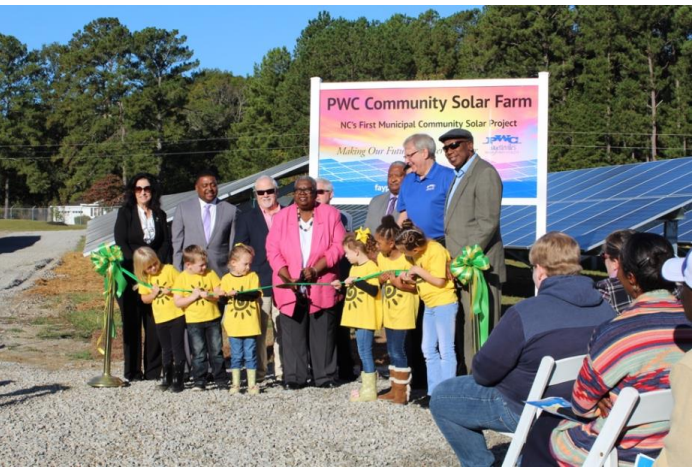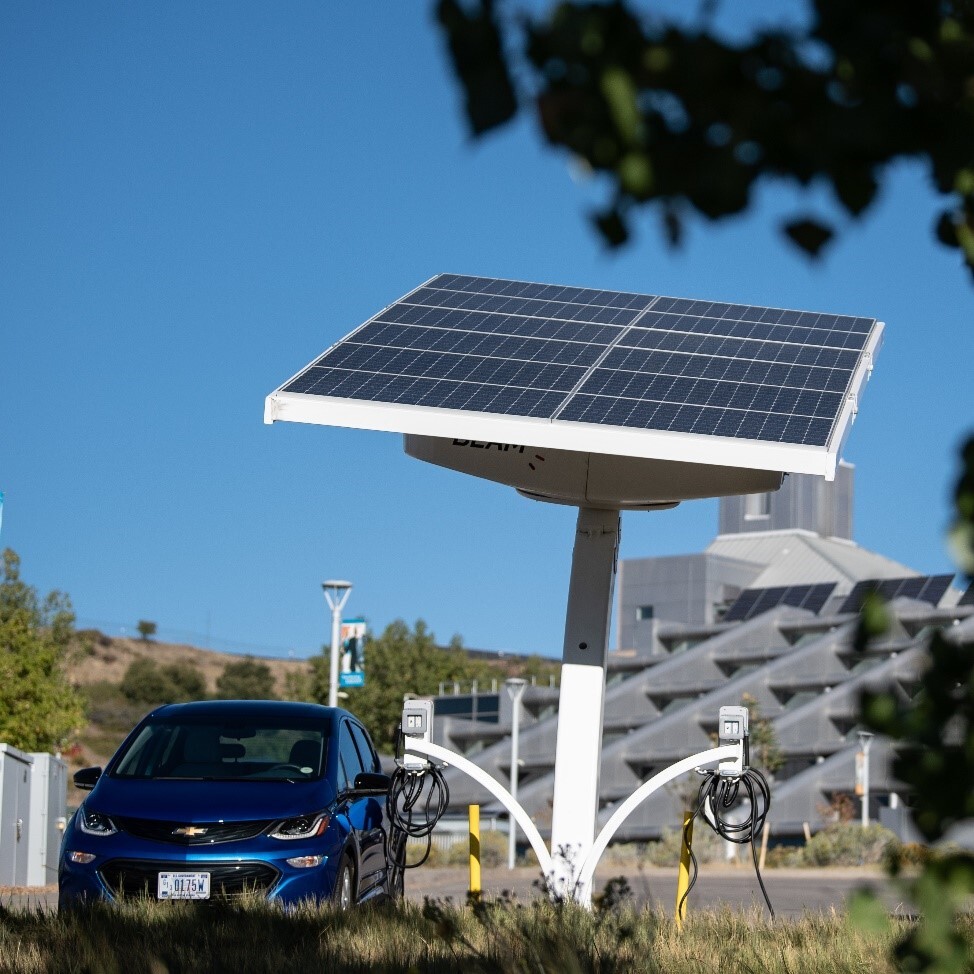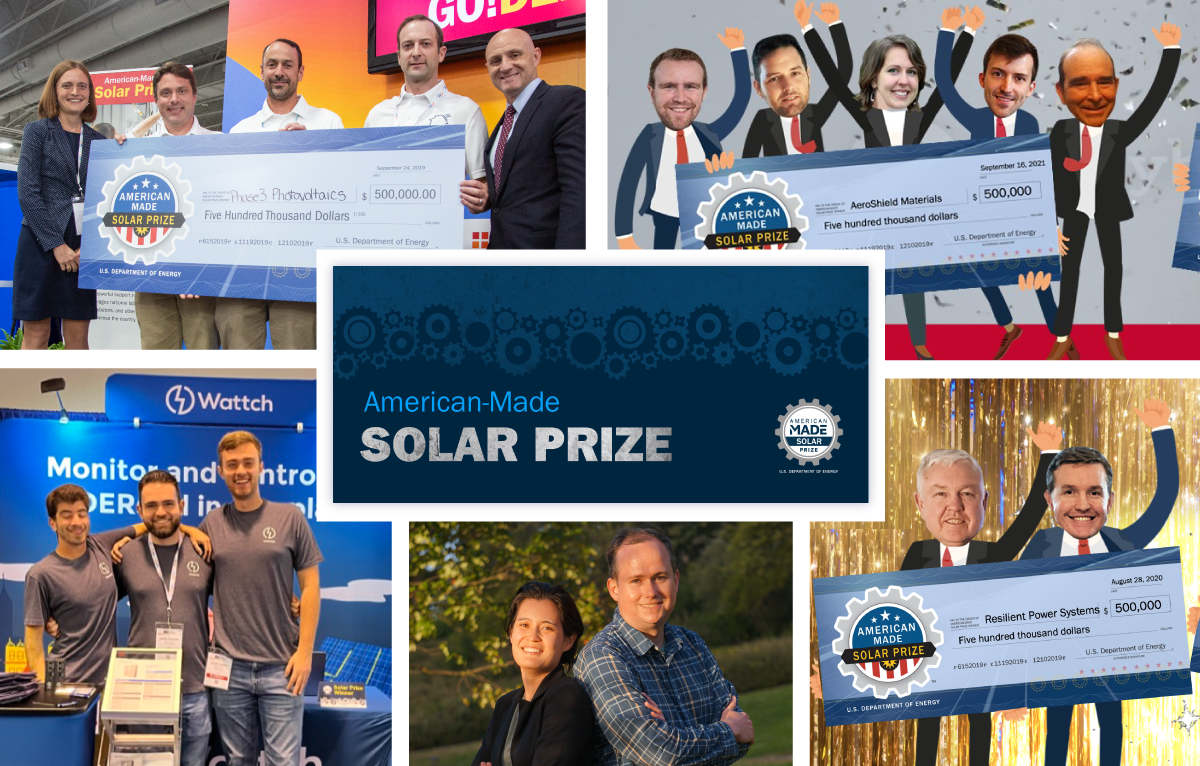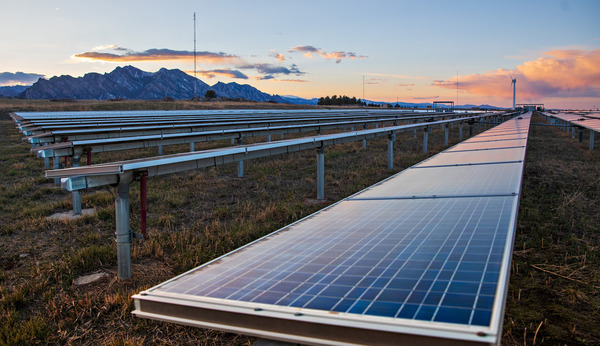Solar in Your Community🤝
In the past, it hasn’t been easy for rural electric cooperatives and municipal electric utilities to offer community solar to their customers because they often lack the funding or expertise needed to develop community solar cost-effectively while navigating their existing rules and rates. Learn how a SETO-funded project developed several tools and resources that will enable even more people to reap the benefits of clean energy.
 The Public Works Commission in Fayetteville, NC celebrates its first community solar array. Photo by the NC Clean Energy Technology Center.
Did you know that harnessing the power of the sun to charge your electric vehicle (EV) can save you money, benefit your local electric grid, and provide backup power to your home? Learn how DOE supports solar energy and EV partnerships to help you power your EV using solar energy while reaping the many benefits.
 The National Renewable Energy Laboratory (NREL) installed this Electronic Vehicle Autonomous Renewable Charger outside the Research Support Facility. Photo by NREL.
The National Community Solar Partnership launched a community solar training program as part of its Community Power Accelerator Prize competition. The Community Power Accelerator™ Learning Lab is designed to provide solar developers with critical resources and know-how to help them launch new equity-focused community solar projects. The learning lab is initially available to those competing in the Community Power Accelerator Prize.
Solar Energy Innovation💡
Not just any piece of land works for a large-scale solar array: it must be sunny, relatively flat, and close to transmission lines so it can be connected to the grid. SETO awardee Nevados Engineering is helping overcome the challenges of solar array siting with innovative solar trackers. Discover how they managed to install solar panels on land previously considered too rugged for solar developments.
 An 11-megawatt solar array equipped with Nevados trackers on sloped ground in Reno, Nevada. Photo by Nevados Engineering.
Solar panels need to withstand the elements to keep producing power for decades, and water is one of a solar module’s trickiest foes. Read about the clever measurement and modeling methods that are helping researchers optimize the way solar modules are sealed to keep water out.
We caught up with past Solar Prize winners to ask how the Prize helped them get their innovations and businesses off the ground. Find out what they’ve been up to since winning and hear how the Solar Prize helps innovators reach their goals and build momentum in the solar market.
 Featured Solar Prize winners (starting from top left, moving clockwise): Phase3 Photovoltaics; AeroShield Materials; Resilient Power Systems; Midday Tech; Wattch, Inc.
Grid Solutions⚡
On October 14, an annual solar eclipse blocked up to 90% of the sun across parts of the United States. Find out how we manage to keep the lights on when the sun doesn’t shine even as U.S. solar energy generation capacity increases to meet the country’s decarbonization goals.
 An annular solar eclipse creates a 'ring of fire' effect as the moon passes in front of the sun. Photo from Shutterstock.
Understanding how photovoltaic (PV) systems age and perform in different environments is important to streamlining operations and increasing deploying across the country. Learn about the findings and achievements of the PV Fleet Performance Data Initiative, which is shedding light on many aspects of solar power productivity across the country.
 The sun sets on a photovoltaics array in the mountains at NREL in Colorado. Photo by Werner Slocum, NREL.
SETO-awardee Maxar Technologies developed advanced forecasting techniques that allowed the Texas grid operator, the Electric Reliability Council of Texas (ERCOT), to integrate more solar power into its grid, reduce operation costs, and improve overall grid reliability. Hear about the innovations and novel methods that made it all possible.
November 7 | 2 p.m. ET
Join NREL for the Sharing the Sun webinar to gain insight into the changing landscape of community solar in 2023. The webinar offers a comprehensive overview of policy influences, market status of current and planned projects, low- to moderate-income household participation, and value propositions for subscribers.
November 15 | 4 p.m. ET
The EnergyTech UP collegiate business plan competition is open to student and faculty competitors! Join this webinar to learn more about the competition, with a special focus on the new faculty track and the $100,000 available for collegiate educators interested in incorporating or expanding energy technology commercialization and entrepreneurship topics into their institution’s educational activities.
Learn more about SETO or DOE’s Office of Energy Efficiency and Renewable Energy.
|